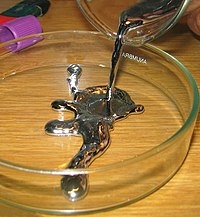
Photo from wikipedia
Polybrominated diphenyl ethers (PBDEs) in the feather and muscle of common kestrels (Falco tinnunculus), eagle owls (Bubo bubo) and little owls (Athene noctua) collected from Beijing, China were investigated. The… Click to show full abstract
Polybrominated diphenyl ethers (PBDEs) in the feather and muscle of common kestrels (Falco tinnunculus), eagle owls (Bubo bubo) and little owls (Athene noctua) collected from Beijing, China were investigated. The concentrations of ∑23PBDEs in the muscle and feather of all the birds of prey ranged from 46 to 7.77 × 104 ng/g lipid weight (lw; median 241 ng/g lw) and 1.50-191 ng/g dry weight (dw; median 21.1 ng/g dw), respectively. Higher brominated congeners, e.g., BDE-209, -153, -207 and -196 were the dominant congeners in both feather and muscle. However, the concentrations of lower brominated congeners in feather were significantly correlated with those in muscle (p < 0.05), which suggested that feather could efficiently reflect lower brominated BDEs in the internal tissue of birds of prey. The calculated hazard quotients (HQs) > 10 in common kestrel and little owl suggested that the high levels of PBDEs posed potentially high risk to some birds of prey living in Beijing area.
Journal Title: Ecotoxicology and environmental safety
Year Published: 2018
Link to full text (if available)
Share on Social Media: Sign Up to like & get
recommendations!